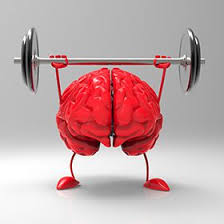In recent years, the use of marijuana has become a topic of increasing interest and debate, particularly in the context of its effects on physical activity and exercise performance. With the growing acceptance of marijuana for both medical and recreational purposes in many regions, understanding its impact on exercise is crucial for athletes, fitness enthusiasts, and health professionals alike. This article delves into the various ways marijuana affects exercise performance, drawing on scientific research and expert opinions to provide a balanced and comprehensive view.
The Science of Marijuana and Its Active Components
Marijuana, derived from the cannabis plant, contains a variety of active compounds, with tetrahydrocannabinol (THC) being the most well-known for its psychoactive effects
. THC interacts with the endocannabinoid system in the brain, which is involved in regulating various physiological processes, including mood, pain sensation, and appetite
. This interaction is what gives marijuana its characteristic effects, which can range from relaxation and euphoria to impaired motor skills and cognitive function.
Acute Effects on Exercise Performance
Cardiovascular System
One of the immediate effects of marijuana use is an increase in heart rate, a condition known as tachycardia
. This effect is particularly pronounced in non-users and can persist for several hours after consumption. During exercise, the heart rate naturally increases to meet the body’s demand for oxygen and nutrients. However, the additional elevation caused by marijuana can place undue stress on the cardiovascular system, potentially leading to complications such as arrhythmias or even myocardial infarctions, especially in individuals with pre-existing heart conditions.
Respiratory System
Smoking marijuana, like smoking tobacco, can have detrimental effects on lung function. Regular marijuana smokers may experience symptoms such as wheezing, breathlessness, and increased mucus production
. These respiratory issues can impair the efficiency of oxygen exchange in the lungs, making it more difficult to sustain high-intensity exercise and potentially reducing overall exercise capacity.
Motor Skills and Coordination
THC has been shown to impair motor skills and coordination, which are essential for many types of physical activities
. This impairment can lead to decreased reaction times and reduced stability, increasing the risk of accidents and injuries during exercise. For example, activities that require precise movements, such as weightlifting or gymnastics, may become significantly more challenging and dangerous under the influence of marijuana.
Cognitive Function
Marijuana use can also affect cognitive functions such as decision-making, attention, and memory
. These cognitive impairments can hinder an individual’s ability to focus and maintain motivation during exercise, potentially leading to suboptimal performance. Additionally, impaired judgment may result in poor decision-making regarding exercise intensity and duration, further increasing the risk of injury.
Chronic Effects on Exercise Performance
Adaptation and Tolerance
With chronic use, the body can develop tolerance to the effects of marijuana, meaning that higher doses are required to achieve the same effects. This adaptation can have implications for long-term exercise performance, as individuals may need to consume larger amounts of marijuana to experience any perceived benefits. However, it is important to note that even with tolerance, the negative effects on cardiovascular and respiratory function may still persist.
Potential Benefits for Recovery
On the other hand, some research suggests that marijuana may have potential benefits for exercise recovery. Cannabinoids, including THC and cannabidiol (CBD), have anti-inflammatory properties that could help reduce muscle soreness and inflammation after intense exercise. Additionally, marijuana may help improve sleep quality, which is essential for optimal recovery and overall health.
Subjective Experiences and Individual Differences
Enhanced Enjoyment and Focus
Anecdotal reports from some individuals suggest that marijuana can enhance the enjoyment and focus during exercise. For example, some runners report feeling more connected to their surroundings and experiencing a heightened sense of awareness while running under the influence of marijuana. This enhanced enjoyment may lead to increased motivation and adherence to exercise routines for some individuals.
Pain Management
Another reason some people use marijuana in conjunction with exercise is for pain management. THC and CBD have been shown to have analgesic properties that can help alleviate pain and discomfort associated with exercise. This pain relief may allow individuals to push through discomfort and potentially achieve greater gains in their fitness journey.
Legal and Regulatory Considerations
It is important to note that the use of marijuana in sports is highly regulated. The World Anti-Doping Agency (WADA) prohibits the use of cannabis in-competition, as it is considered a performance-enhancing substance. Athletes who test positive for THC during competition may face sanctions and disqualification. Therefore, it is crucial for athletes to be aware of these regulations and the potential consequences of marijuana use in their sport.
Conclusion
The relationship between marijuana and exercise performance is complex and multifaceted. While some individuals report subjective benefits such as enhanced enjoyment and focus, scientific research largely indicates that marijuana use can have several negative effects on exercise performance, particularly in the acute phase. These effects include increased heart rate, impaired motor skills, and reduced cognitive function, all of which can increase the risk of injury and hinder performance. However, chronic use may lead to adaptations that could potentially mitigate some of these effects, and there is evidence to suggest that marijuana may have benefits for exercise recovery.
Given the current state of research and the potential risks involved, it is advisable for individuals to approach marijuana use and exercise with caution. Further rigorous studies are needed to fully understand the long-term effects of marijuana on exercise performance and to determine the optimal ways to harness its potential benefits while minimizing risks. Until then, it is essential for individuals to make informed decisions based on their personal goals, health status, and the specific requirements of their sport or fitness regimen.






